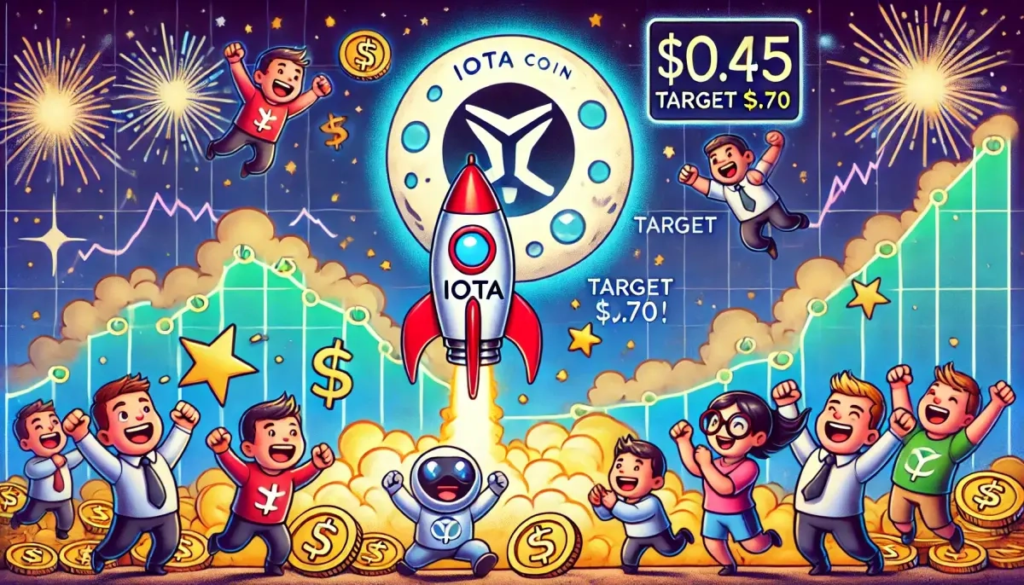IOTA Blockchain Technology: A New Era for the Internet of Things
IOTA blockchain technology is reshaping how billions of devices communicate, transact, and share data. Unlike traditional blockchains weighed down by fees, slow speeds, and energy demands, IOTA’s unique Tangle architecture offers a feeless, scalable, and eco-friendly infrastructure — tailor-made for the explosive growth of the Internet of Things (IoT).
With over 17 billion IoT devices projected by 2030 (Statista), the ability to handle microtransactions and real-time data without cost barriers isn’t just an advantage — it’s essential.
The Origins and Vision of IOTA
Founded in 2015, the non-profit IOTA Foundation set out to solve IoT’s biggest problems: high transaction fees, latency, and energy consumption. Its answer was the Tangle, a directed acyclic graph (DAG) that eliminates miners and replaces blocks with parallel transaction validation.
This innovation enables:
- Feeless microtransactions for low-power devices
- Decentralized identity solutions meeting W3C standards
- Quantum-resistant cryptography for future-proof security
- Offline transaction capability for remote or intermittent connectivity
In 2024, IOTA’s Identity solution was recognized by the European Blockchain Sandbox, cementing its readiness for regulatory integration.
How the Tangle Works
The Tangle thrives on participation: every new transaction validates two prior ones. This self-sustaining model grows faster and more secure as the network expands.
| Feature | Traditional Blockchain | IOTA Tangle |
|---|---|---|
| Transaction Fees | Required | Zero fees |
| Scalability | Limited by block size | Improves with usage |
| Validation | Miners | Users/devices |
| IoT Suitability | Costly for small data | Optimized for IoT |
This architecture makes real-time, feeless device-to-device communication possible — whether for autonomous vehicles exchanging traffic updates or smart grids managing renewable energy.
Key Features of IOTA Blockchain Technology
Feeless Transactions
Eliminating fees opens the door for microtransactions between IoT devices, such as sensors or smart appliances.
Scalability by Design
The Tangle improves performance as more participants join, making it ideal for billions of connected devices.
Offline Functionality
Devices can process and store transactions offline, syncing with the network later — crucial for rural or industrial settings.
Quantum Resistance
IOTA uses post-quantum cryptography to protect against next-generation cyber threats.
Data Marketplace
IOTA’s ecosystem supports a decentralized exchange where devices can buy and sell data securely.
Real-World Applications of IOTA Blockchain Technology
Smart Cities and Infrastructure
IOTA enables fee-free parking systems, traffic management, air quality monitoring, and waste tracking.
Energy Markets
Consumers can sell excess solar power directly to neighbors, fostering decentralized, green energy networks.
Supply Chains
From food freshness tracking to anti-counterfeit measures, IOTA ensures transparency across global logistics.
Healthcare
Secure sharing of electronic health records and medical device data while maintaining GDPR compliance.
Challenges and Criticisms
While innovative, IOTA faces hurdles:
- Coordinator Dependence — Until the “Coordicide” upgrade fully removes this central validation node, decentralization purists remain skeptical.
- Security Vulnerabilities — Past incidents, including the 2020 Trinity Wallet hack, dented investor confidence.
- Ecosystem Maturity — Competing with established platforms like Ethereum requires sustained developer adoption.
The IOTA Foundation is actively addressing these issues with protocol upgrades, enhanced security, and enterprise partnerships with companies like Bosch and Dell.
IOTA Cryptocurrency in the IoT Economy
The IOTA token fuels the ecosystem without transaction fees, enabling high-volume, low-cost data and payment flows. Its fixed supply prevents inflation, and integration with smart contract platforms like Shimmer EVM expands use cases beyond IoT into DeFi and enterprise automation.
The Road Ahead for IOTA Blockchain Technology
IOTA’s DAG architecture positions it as a potential industry standard for IoT. With the rollout of IOTA 2.0, quantum-safe protocols, and decentralization milestones, it could become the backbone for smart cities, industrial automation, and machine-to-machine commerce.
If it can overcome its centralization and security hurdles, IOTA might not just participate in the IoT revolution — it could define it.
FAQ: IOTA Blockchain Technology
What is IOTA blockchain technology?
IOTA blockchain technology is a distributed ledger optimized for IoT, using the Tangle DAG to process feeless, scalable transactions.
How is IOTA different from traditional blockchains?
Unlike blockchains that rely on miners and fees, IOTA’s Tangle validates transactions collaboratively, improving performance as usage grows.
What are the main benefits of IOTA blockchain technology?
Key benefits include zero transaction fees, scalability, offline capability, quantum resistance, and a decentralized data marketplace.
Where is IOTA being used today?
IOTA powers applications in smart cities, renewable energy markets, supply chain tracking, and healthcare data security.
What challenges does IOTA face?
Main challenges include centralization concerns, past security breaches, and slower adoption compared to larger blockchain ecosystems.

